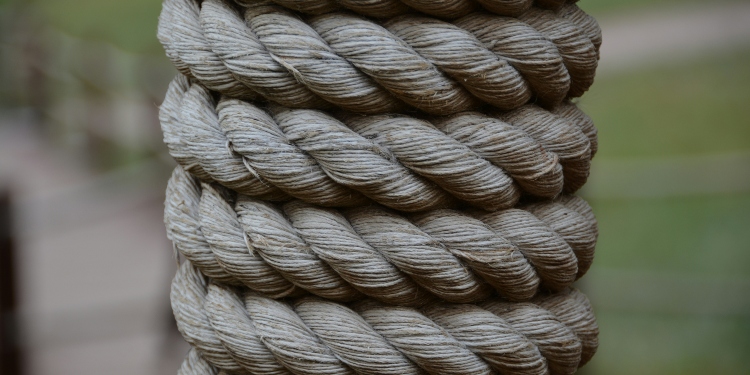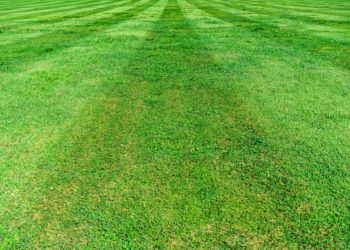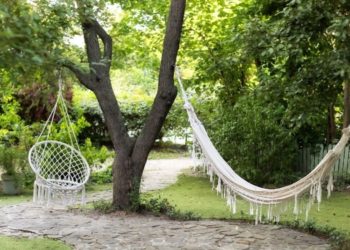Ropes are among the most versatile tools in both garden and home projects, offering strength, flexibility and style. From traditional natural fibres to modern synthetic options, each type of rope brings unique qualities that suit specific tasks. Knowing the differences helps you choose the right rope for decking, decoration, or everyday use.
Ropes have been essential for centuries, serving everything from sailing ships to household projects. In a garden setting they are not only practical but also decorative, often used in decking, fencing, swings and plant supports. Today there are two main categories of Garden Ropes to consider. Natural ropes made from plant fibres such as jute, hemp, sisal and manila provide rustic beauty, while synthetic ropes deliver resilience and low maintenance. By understanding the strengths and weaknesses of each type, you can select the best rope for your specific needs.
Natural fibre ropes for traditional appeal
Natural fibre ropes are valued for their rustic look and soft texture. Jute rope is one of the most popular options thanks to its light brown colour and eco friendly qualities. It works beautifully for decorative handrails, trellises, or crafts where appearance matters. Jute is soft on the hands, making it ideal for games such as tug of war or temporary garden projects. However it is less durable in wet conditions and should be treated with oil if exposed outdoors for long periods.
Sisal rope is another natural choice, made from agave fibres. It is coarser than jute and provides a firm grip, which makes it suitable for outdoor play equipment or fencing. Its pale golden tone also adds brightness to borders and posts. Like jute, it will eventually weather and break down if not protected.
Manila rope offers greater strength and durability than either jute or sisal. Produced from abaca fibres, it contains natural oils that help resist moisture and rot. Manila has long been used in maritime settings and today it is often chosen for decking ropes, boundary lines and heavy decorative uses. It holds knots well and retains a traditional, nautical look that enhances many gardens.
Synthetic ropes for long lasting performance
Synthetic ropes are designed to withstand weather, water and sun while requiring little maintenance. Synthetic hemp and synthetic sisal are made to mimic the texture of natural fibres but with much greater resilience. They maintain their colour, do not shrink when wet and resist rot. These ropes are popular for decking, handrails and permanent garden structures where a natural appearance is wanted without the upkeep.
Polyester rope is another excellent synthetic option. It is strong, flexible and resistant to ultraviolet rays, mildew and chemicals. This makes it suitable not only for garden projects but also for marine use, securing loads or outdoor furniture. Polyester rope is smooth and easy to handle while maintaining impressive durability over time.
Polypropylene ropes offer lightweight practicality and come in a range of colours, from subtle beige to camouflage and bright designs. They are moisture resistant and float on water, making them versatile for general use, children’s play areas or colourful decorative touches. While not as soft as polyester or natural fibres, polypropylene ropes deliver functionality at a lower cost.
Choosing the right rope for the job
The best rope depends on where and how it will be used. For a traditional garden look with handrails or borders, manila or hemp are strong natural choices. If softness and eco friendliness are priorities, jute works well for light tasks and decorative elements. For projects that need to withstand constant exposure to rain and sun, synthetic hemp or polyester are safer investments. They combine strength with weather resistance and still offer an attractive appearance.
When fun or creativity is the focus, colourful polypropylene ropes can be used for swings, climbing frames or craft projects. They are easy to cut and install while adding a playful element to the garden. Tug of war ropes are usually made of thicker jute or sisal, giving participants a secure grip and comfort during play.
By considering the balance of appearance, strength, cost and maintenance, you can match the right rope to the right project. Each type has its advantages and together they provide an extensive range of solutions for both practical and decorative purposes.
David Prior
David Prior is the editor of Today News, responsible for the overall editorial strategy. He is an NCTJ-qualified journalist with over 20 years’ experience, and is also editor of the award-winning hyperlocal news title Altrincham Today. His LinkedIn profile is here.














































































